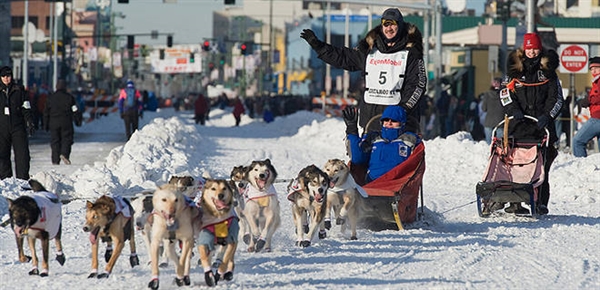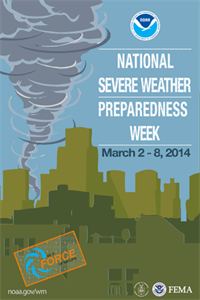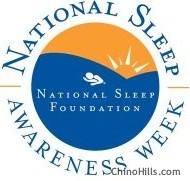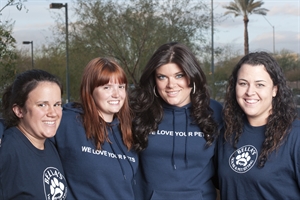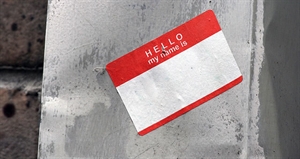Iditarod Begins Day 2025 is on Sunday, March 2, 2025: What event does the Iditarod commemorate?
Sunday, March 2, 2025 is Iditarod Begins Day 2025. Telling Togo's Tale: The Iditarod…it all begins at the Mushers ... Iditarod Day 1 Mushers
As an Amazon Associate I earn from qualifying purchases.

To commerate the mushers and dogs.
The most famous event in the history of Alaskan mushing is the 1925 serum run to Nome, also known as the "Great Race of Mercy". A diphtheria epidemic threatened Nome, especially the Inuit children who had no immunity to the "white man's disease", and the nearest quantity of antitoxin was in Anchorage. Since the two available planes were both dismantled and had never been flown in the winter, Governor Scott Bone approved a safer route. The 20-pound (9 kg) cylinder of serum was sent by train 298 miles (480 km) from the southern port of Seward to Nenana, where it was passed just before midnight on January 27 to the first of twenty mushers and more than 100 dogs who relayed the package 674 miles (1,085 km) from Nenana to Nome. In the serum delivery, the dogs ran in relays with no dog running over 100 miles.
The Norwegian Gunnar Kaasen and his lead dog Balto, arrived on Front Street in Nome on February 2 at 5:30 a.m., just five and a half days later. The two became media celebrities, and a statue of Balto was erected at Central Park in New York City in 1925, where it has become one of the most popular tourist attractions. However, most mushers consider Leonhard Seppala and his lead dog Togo to be the true heroes of the run. Together they covered the most hazardous stretch of the route, and carried the serum further than any other team.
The Iditarod was the brainchild of Dorothy G. Page (the "Mother of the Iditarod"), who wanted to sponsor a sled dog race to honor mushers. With the support of Joe Redington, Sr. (the "Father of the Iditarod"), the first Iditarod Trail Seppala Memorial Race was held in 1967 and covered 25 miles (40 km) near Anchorage. The purse of USD $25,000 attracted a field of 58 racers and the winner was Isaac Okleasik. The next race in 1968 was canceled due to lack of snow, and the small $1,000 purse in 1969 only drew 12 mushers. The race was originally called the Iditarod Trail Seppala Memorial Race in honor of Leonhard Seppala.
The Iditarod began in 1973 as an event to test the best dogsled mushers and teams, evolving into the highly competitive race it is today. The current fastest winning time record was set in 2002 by Martin Buser with a time of 8 days, 22 hours, 46 minutes, and 2 seconds.
Frequently teams race through blizzards causing whiteout conditions, and sub-zero weather and gale-force winds which can cause the wind chill to reach -100 °F (-75 °C). The trail runs through the U.S. state of Alaska. A ceremeonial start occurs in the city of Anchorage and is followed by the official restart in Willow, a city in the southcental region of the state. The trial proceeds from Willow up the Rainy Pass of the Alaska Range into the sparsely populated Interior, and then along the shore of the Bering Sea, finally reaching Nome in western Alaska. The teams cross a harsh but starkly beautiful landscape under the canopy of the Northern Lights, through tundra and spruce forests, over hills and mountain passes, and across rivers. While the start in Anchorage is in the middle of a large urban center, most of the route passes through widely separated towns and villages, and small Athapaskan and Inuit settlements. The Iditarod is regarded as a symbolic link to the early history of the state, and is connected to many traditions commemorating the legacy of dog mushing.
The race is arguably the most popular sporting event in Alaska, and the top mushers and their teams of dogs are local celebrities; this popularity is credited with the resurgence of recreational mushing in the state since the 1970s. While the yearly field of more than fifty mushers and about a thousand dogs is still largely Alaskan, competitors from fourteen countries have completed the event including the Norwegian Robert Sørlie, who became the first international winner in 2003.
The Iditarod received more attention outside of the state after the 1985 victory of Libby Riddles, a long shot who became the first woman to win the race. Susan Butcher became the second woman to win the race, and went on to dominate for half a decade. Print and television journalists and crowds of spectators attend the start at the intersection of Fourth Avenue and D Streets in Anchorage, and in smaller numbers at the checkpoints along the trail.
History
Portions of the Iditarod Trail were used by the Native American Inuit and Athabaskans hundreds of years before the arrival of Russian fur traders in the 1800s, but the trail reached its peak between the late 1880s and the mid 1920s as miners arrived to dig coal and later gold, especially after the Alaska gold rushes at Nome in 1898, and at the "Inland Empire" along the Kuskokwim Mountains between the Yukon and Kuskokwim rivers, in 1908.
The primary communication and transportation link to the rest of the world during the summer was the steamship; but between October and June the northern ports like Nome became icebound, and dog sleds delivered mail, firewood, mining equipment, gold ore, food, furs, priests, and other needed supplies between the trading posts and settlements across the Interior and along the western coast. Roadhouses where travelers could spend the night sprang up every 14 to 30 miles (23 to 48 km) until the end of the 1920s, when the mail carriers were replaced by bush pilots flying small aircraft and the roadhouses vanished. Dog sledding persisted in the rural parts of Alaska, but was almost driven into extinction by the spread of snowmobiles in the 1960s.
During its heyday, mushing was also a popular sport during the winter, when mining towns shut down. The first major competition was the tremendously popular 1908 All-Alaska Sweepstakes (AAS), which was started by Allan "Scotty" Alexander Allan, and ran 408 miles (657 km) from Nome to Candle and back. The event introduced the first Siberian huskies to Alaska in 1910, where they quickly became the favored racing dog, replacing the Alaskan malamute, and mongrels bred from imported huskies and other large breeds, like setters and pointers. In 1914, the Norwegian immigrant Leonhard Seppala first appeared, and went on to win the race in 1915, 1916, and 1917, before the race was discontinued in 1918 during World War I.
Statue of Balto in Central Park (New York City)The most famous event in the history of Alaskan mushing is the 1925 serum run to Nome, also known as the "Great Race of Mercy". A diphtheria epidemic threatened Nome, especially the Inuit children who had no immunity to the "white man's disease", and the nearest quantity of antitoxin was in Anchorage. Since the two available planes were both dismantled and had never been flown in the winter, Governor Scott Bone approved a safer route. The 20-pound (9 kg) cylinder of serum was sent by train 298 miles (480 km) from the southern port of Seward to Nenana, where it was passed just before midnight on January 27 to the first of twenty mushers and more than 100 dogs who relayed the package 674 miles (1,085 km) from Nenana to Nome. In the serum delivery, the dogs ran in relays with no dog running over 100 miles.
The Norwegian Gunnar Kaasen and his lead dog Balto, arrived on Front Street in Nome on February 2 at 5:30 a.m., just five and a half days later. The two became media celebrities, and a statue of Balto was erected at Central Park in New York City in 1925, where it has become one of the most popular tourist attractions. However, most mushers consider Leonhard Seppala and his lead dog Togo to be the true heroes of the run. Together they covered the most hazardous stretch of the route, and carried the serum further than any other team.
The Iditarod was the brainchild of Dorothy G. Page (the "Mother of the Iditarod"), who wanted to sponsor a sled dog race to honor mushers. With the support of Joe Redington, Sr. (the "Father of the Iditarod"), the first Iditarod Trail Seppala Memorial Race was held in 1967 and covered 25 miles (40 km) near Anchorage. The purse of USD $25,000 attracted a field of 58 racers and the winner was Isaac Okleasik. The next race in 1968 was canceled due to lack of snow, and the small $1,000 purse in 1969 only drew 12 mushers. The race was originally called the Iditarod Trail Seppala Memorial Race in honor of Leonhard Seppala.
I know everything about a dog sled race calle the Iditarod, without looking anything up tell me wht u now!?!?!
The first Iditarod race began in 1973. The Iditarod is a race that starts in Anchorage AK and ends in Nome AK. It is about 1150 miles long. Each team consists of 12-16 sled dogs. The fastest time completed was in 8 days, and the slowest was completed in 32 days.

Can any think of a good hook for a biography about gary paulsen?
I thought when he was young, he ran away and joined the circus. That's something a lot of kids think about, but don't do (thankfully, since for most, it wouldn't work out). Perhaps you can target this somehow? I found where it's mentioned... the book GUTS.
Seems his life has been full of adventures many of us will only read about. I checked out a kid's biography on him and much of it was about his days participating in the Iditarod in Alaska (may be the basis for Hatchet). So something there would be a good hook, too. Just enough to get the reader wondering what will come next.









